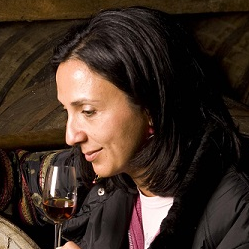Improving Wine Quality and Safety
A special issue of Beverages (ISSN 2306-5710).
Deadline for manuscript submissions: closed (28 February 2021) | Viewed by 28617
Special Issue Editors
Interests: wine science and technology; wine stabilization; analytical chemistry; wine proteins; sensory analysis
Special Issues, Collections and Topics in MDPI journals
Interests: wine chemistry; polyphenolic compounds; astringency; sensory analysis; antioxidant activity
Special Issues, Collections and Topics in MDPI journals
Special Issue Information
Dear Colleagues,
The quality of food products is among the most important parameters that influence consumer choices. Today, there is an increasing demand for high-quality wines with excellent organoleptic properties. High-quality wines attract consumers’ attention, increasing at the same time their awareness and willingness to pay more.
Original and review papers dealing with improving wine quality are welcomed for inclusion in this Special Issue that will focus primarily on the following:
- Compounds of technological importance (e.g., polyphenols, macromolecules, volatiles, etc.);
- Development of analytical methods;
- Microorganisms (e.g., yeast, bacteria);
- Impact of processing techniques and additives;
- Role of maturation and aging;
- Sensory characteristics of the wine connected with quality;
- Role of indigenous varieties;
- Environmental factors that affect wine quality;
- Impact of the climate change on wine quality parameters.
Dr. Matteo Marangon
Prof. Dr. Stamatina Kallithraka
Guest Editors
Manuscript Submission Information
Manuscripts should be submitted online at www.mdpi.com by registering and logging in to this website. Once you are registered, click here to go to the submission form. Manuscripts can be submitted until the deadline. All submissions that pass pre-check are peer-reviewed. Accepted papers will be published continuously in the journal (as soon as accepted) and will be listed together on the special issue website. Research articles, review articles as well as short communications are invited. For planned papers, a title and short abstract (about 100 words) can be sent to the Editorial Office for announcement on this website.
Submitted manuscripts should not have been published previously, nor be under consideration for publication elsewhere (except conference proceedings papers). All manuscripts are thoroughly refereed through a single-blind peer-review process. A guide for authors and other relevant information for submission of manuscripts is available on the Instructions for Authors page. Beverages is an international peer-reviewed open access quarterly journal published by MDPI.
Please visit the Instructions for Authors page before submitting a manuscript. The Article Processing Charge (APC) for publication in this open access journal is 1600 CHF (Swiss Francs). Submitted papers should be well formatted and use good English. Authors may use MDPI's English editing service prior to publication or during author revisions.
Keywords
- wine
- processing
- sensory
- quality
- Polyphenols
- antioxidant activity
- color
- aroma
- taste
- stability
- preservation
- ageing
- maturation
- wine chemistry and analysis
- flavor compounds






